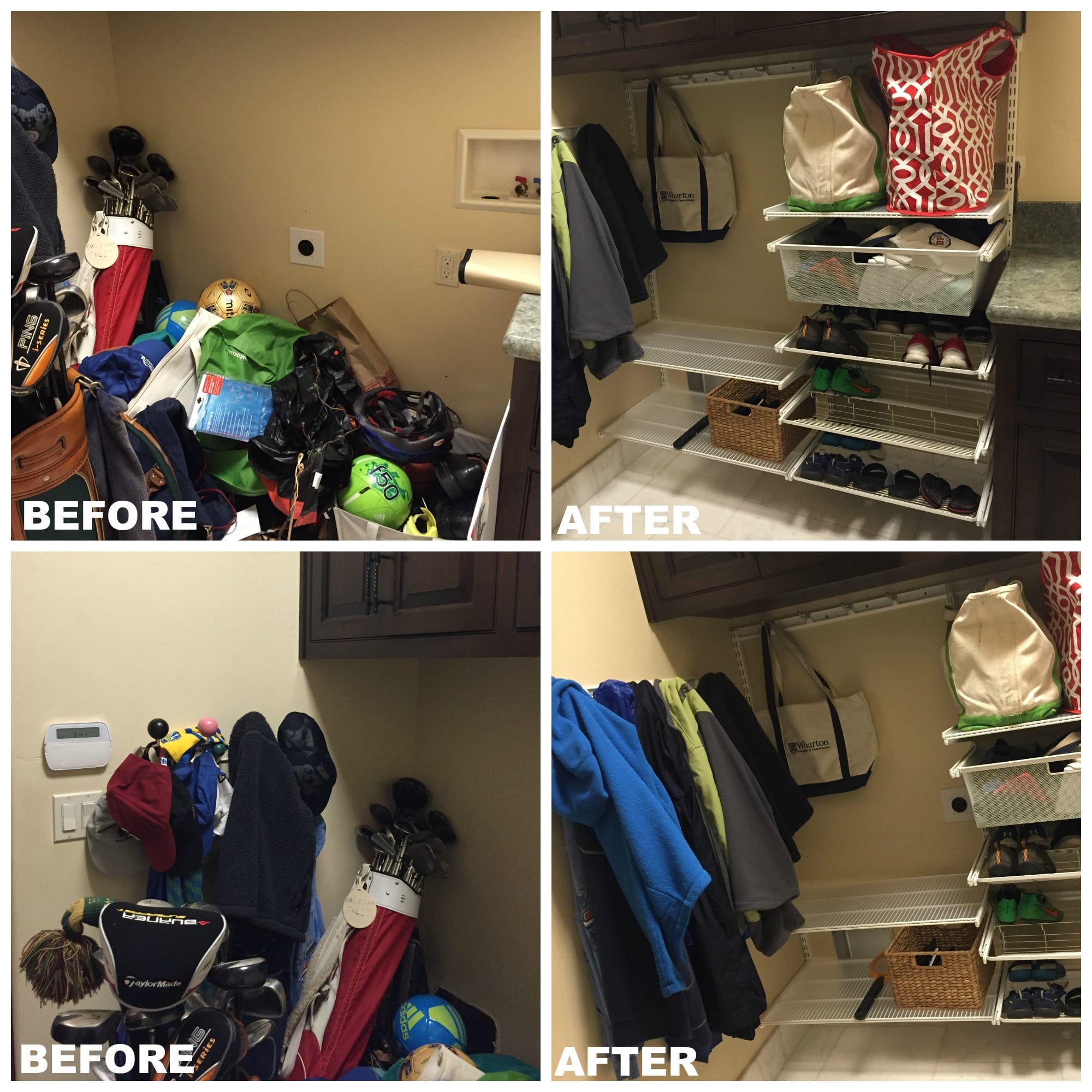It’s a New Year and like most of us, you’re hoping to be better at something; eat better, exercise more, learn a new instrument, be more patient, etc. For those of you who’ve added “organization” to your New Year’s resolution list, you’ll appreciate the following tips and advice to curtail clutter and keep chaos to a minimum.
Keep Horizontal Surfaces Clear
– Your dining room table and kitchen counters are easy dumping spots for mail, homework, purses, backpacks and other items your family brings into your home. In order to discourage your family from just dropping their stuff on random horizontal surfaces, fill your horizontal surfaces with decorative items or set your dining table after each meal.
Practice Evening Cleanup
– Spend 10-20 minutes returning items to where they belong before you go to bed. If you’ve taken something out, it goes back where it belongs. If a jacket landed on a chair, hang it up. If mail is on the counter, put it where you’ll deal with it. Get your entire family involved. This is a skill that requires practice and routine, especially in today’s busy households.
Involve Your Family
– In most homes there is usually one person who sets up the organization system(s). If you want your home to stay organized, you need to involve your entire family in the process. Show them the bins you’ve set up, label containers so they know where to find things and where to return them, make it easy for them to access the most commonly used items so they can easily return them when not in use. Things won’t always be perfect, but you can quickly recover when everything has a home and everyone knows where things go.
Make Things Easy To Put Away
– Stacked bins and boxes look great and closed lids can hide a lot of clutter. However if you can’t easily put something away, you probably won’t do it. When possible, store items in open containers. This includes art supplies, office supplies, bathroom supplies, medicines, snack bars, and other grab-n-go items. A client of mine removed her hamper with a lid from the back of her closet. She replaced it with an open laundry container in the corner of her room. Suddenly her husband was actually putting his clothes in the laundry container, rather than dropping them on the floor. Problem solved!
Purge When Your Containers Are Full
– A general rule of a good organization system is that “like” items are grouped together. Bins, baskets and other containers make grouping “like” items more efficient and keep the items inside from spreading to other areas. When containers become a visual eyesore, then you know it’s time to purge. For example, if your kids’ toy bins are spilling onto the floor, it’s time sort the items inside, get rid of the broken items, purge as needed, and get the remaining items into their proper home.
Create a Donation Bin
– When you find something in your home you no longer want or need, put it in your “Donation Bin”. It can be a box, a shelf, or a bag, but it must be clearly marked so everyone knows what it is. When the bin is full, take the contents to your favorite charity. The larger project of cleaning and organizing a space (when you’re ready to tackle it) will go much faster when you’re only dealing with the items you actually want or need.
Make “Give It Away” Easy
– Know where to give things away: toys, clothes, books, electronics, furniture, office supplies, etc. Getting rid of things is easier when you know someone else will benefit from them. Most charities provide pick up services or find a drop-off center near you. You can also post on NextDoor if you want to deal with people in your community. If you’re a techy check out: Giveit and Wovin.org
Just Because It’s Free, Doesn’t Mean You Should Take It
– Conferences, trade shows, athletic events, everyone wants to give you a free mug, t-shirt, or tote bag. Even your extended family may be guilty of trying to unload stuff on to you that they don’t want or need. It’s okay to say “no”. e.g. “I have too much stuff already, but thank you for the offer,” or “I’m overwhelmed by all the stuff I currently have, please give this to someone who could use it more than me.” When items you don’t want or need enter your home, they create clutter. It’s easier to not let them in then to deal with them later.


